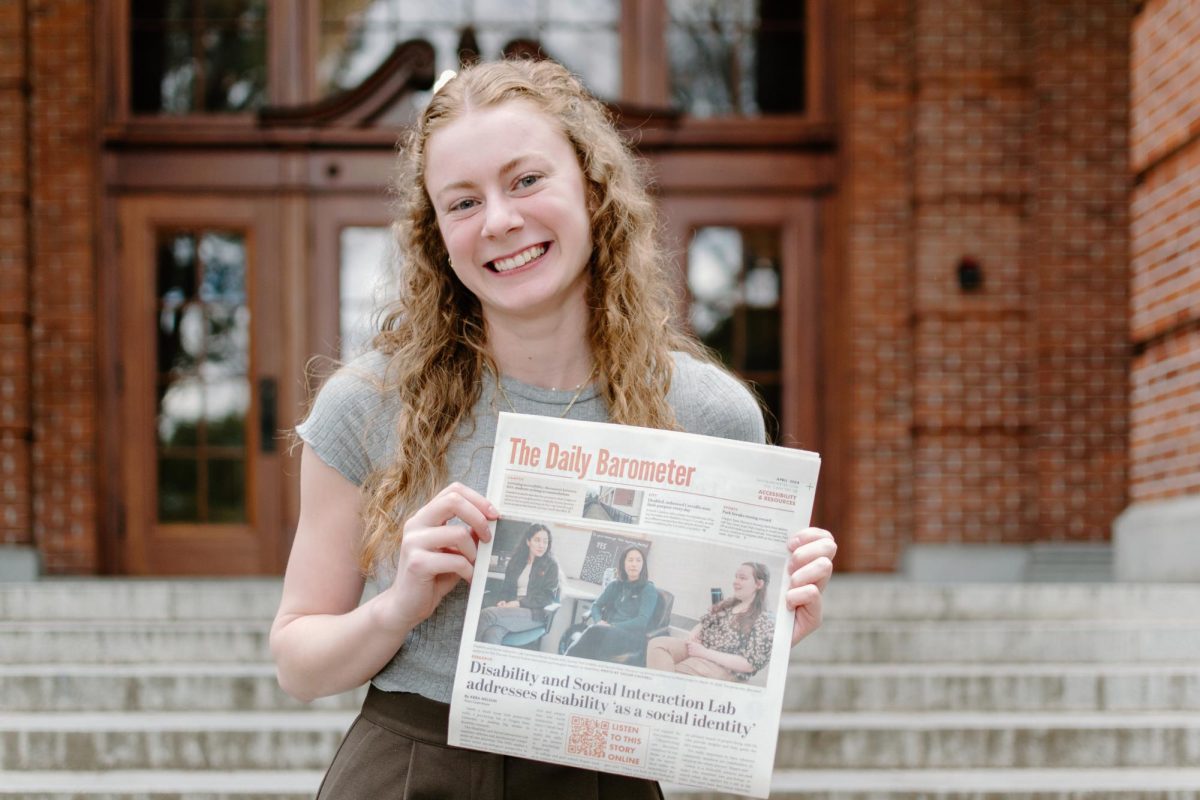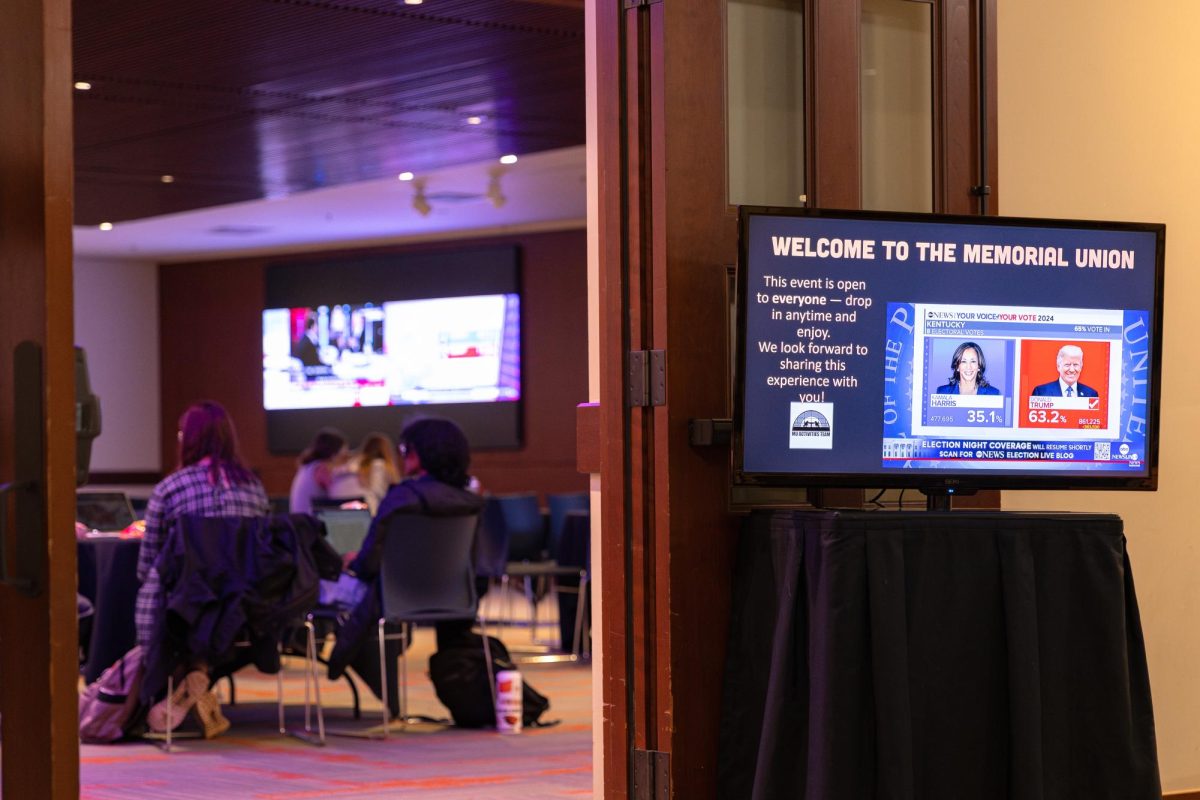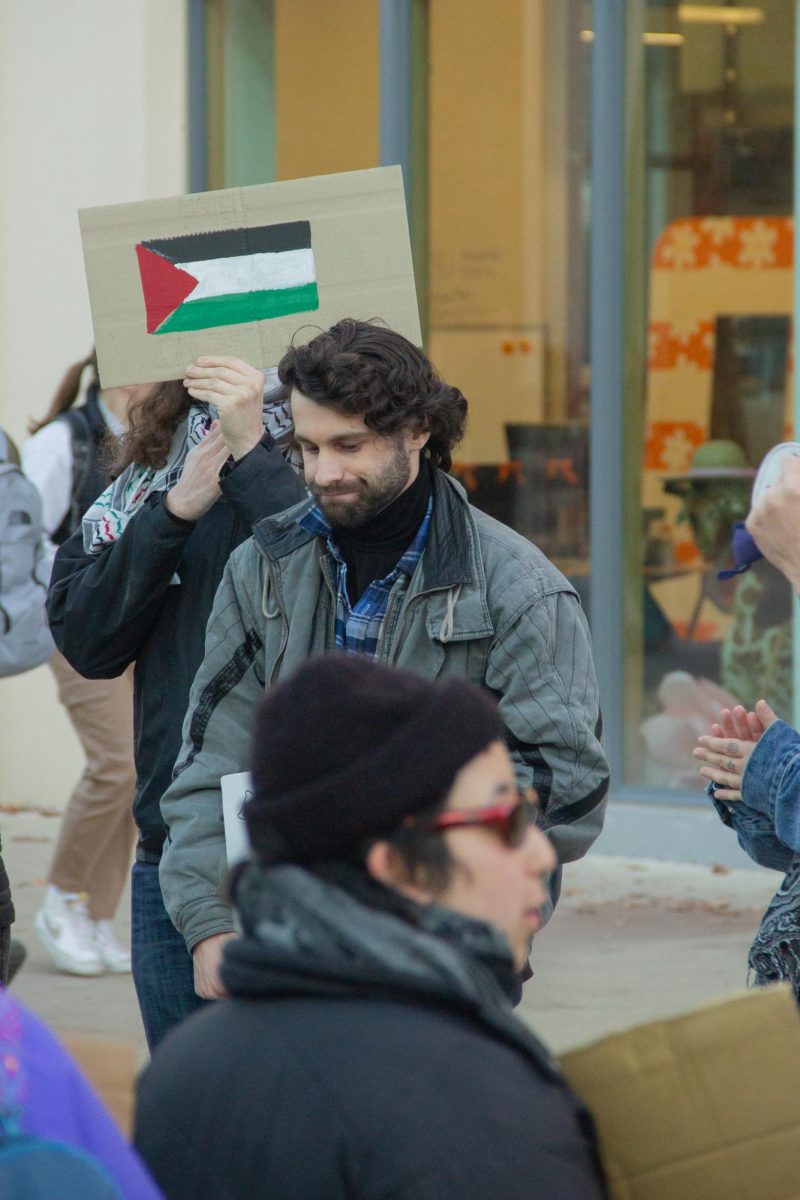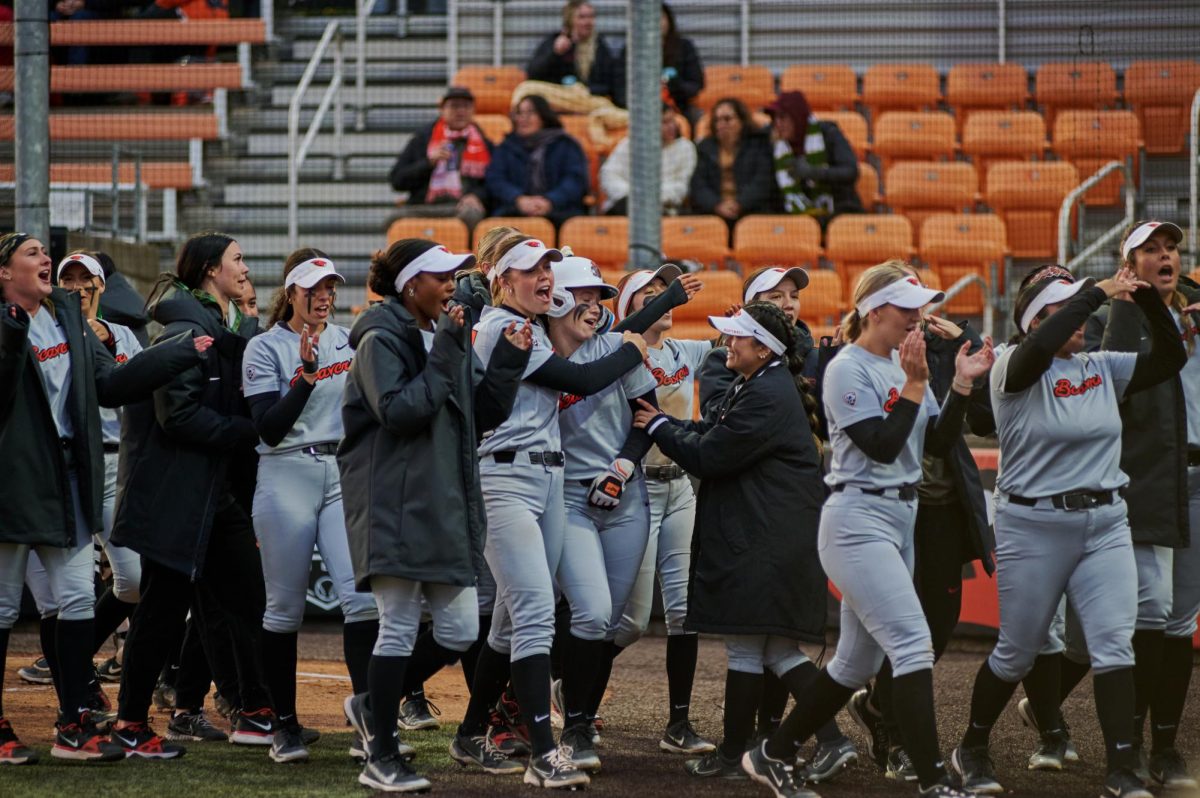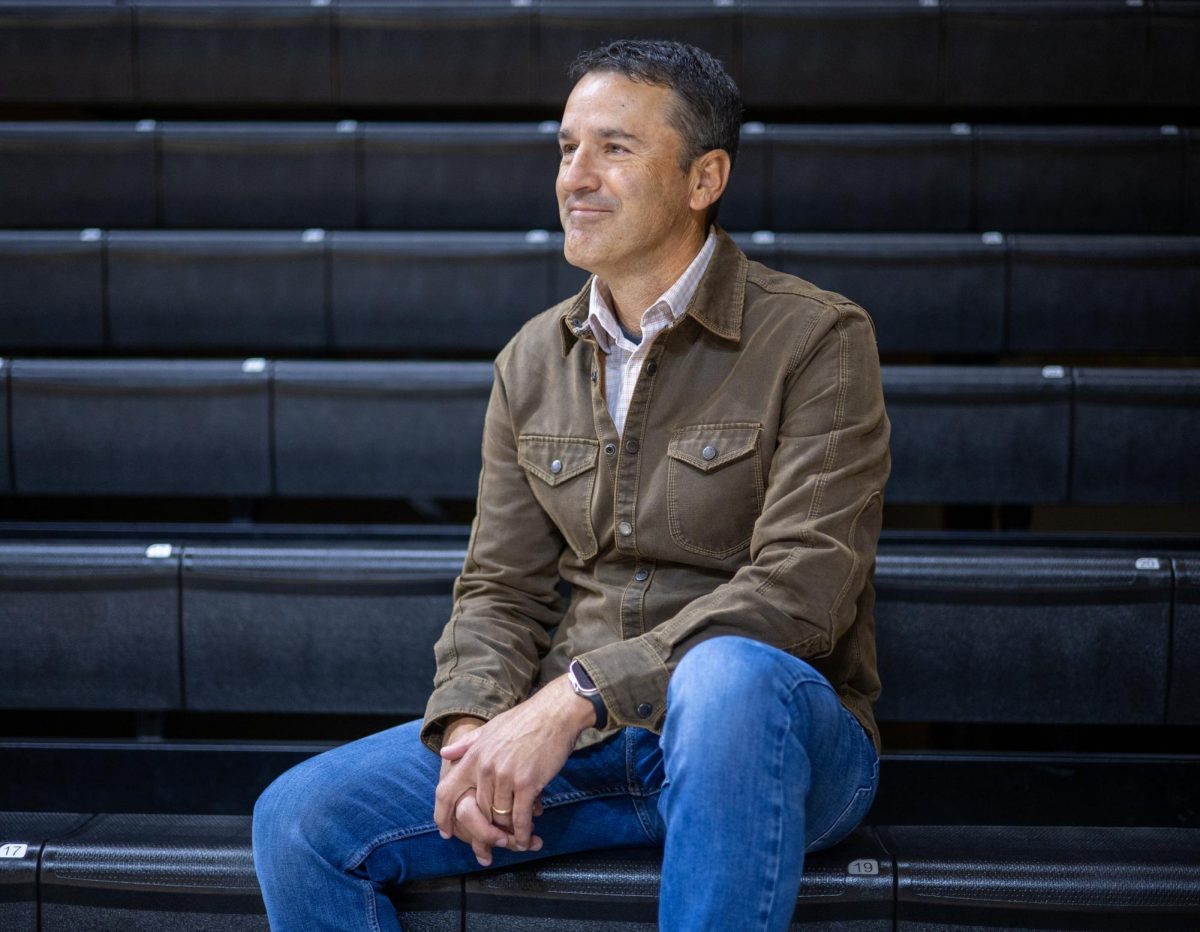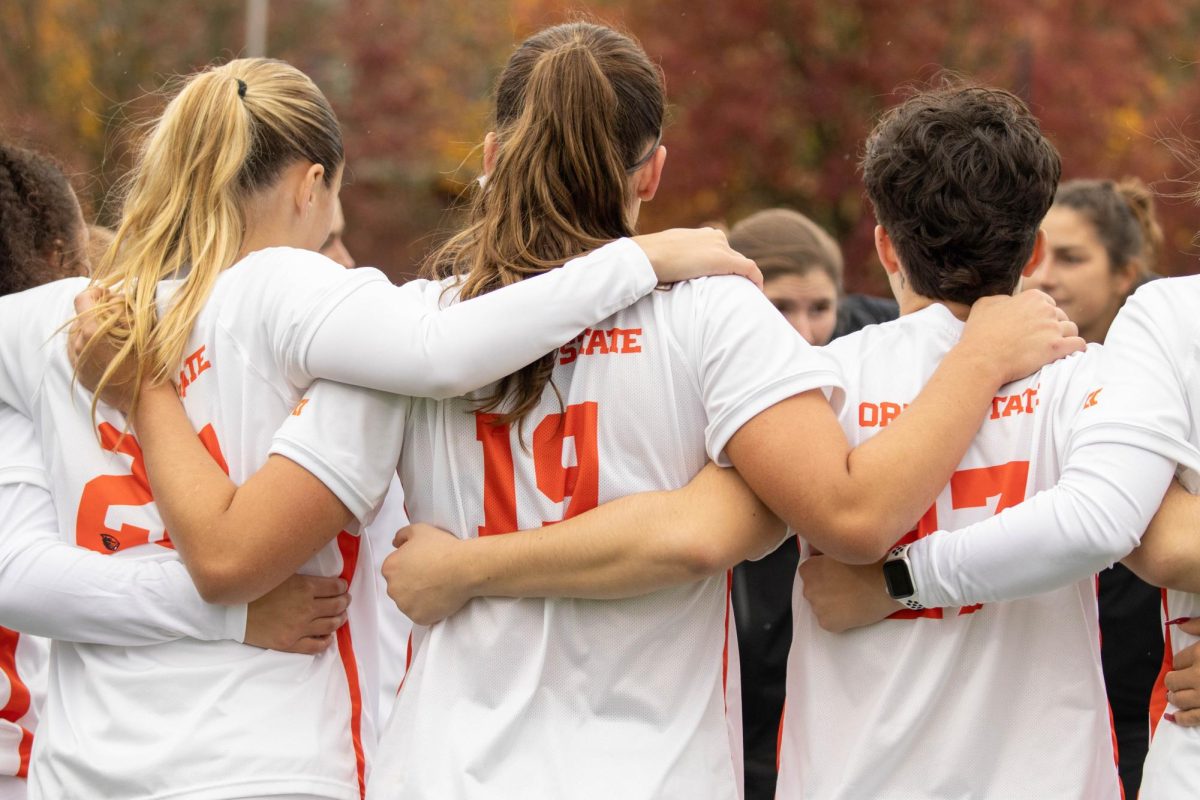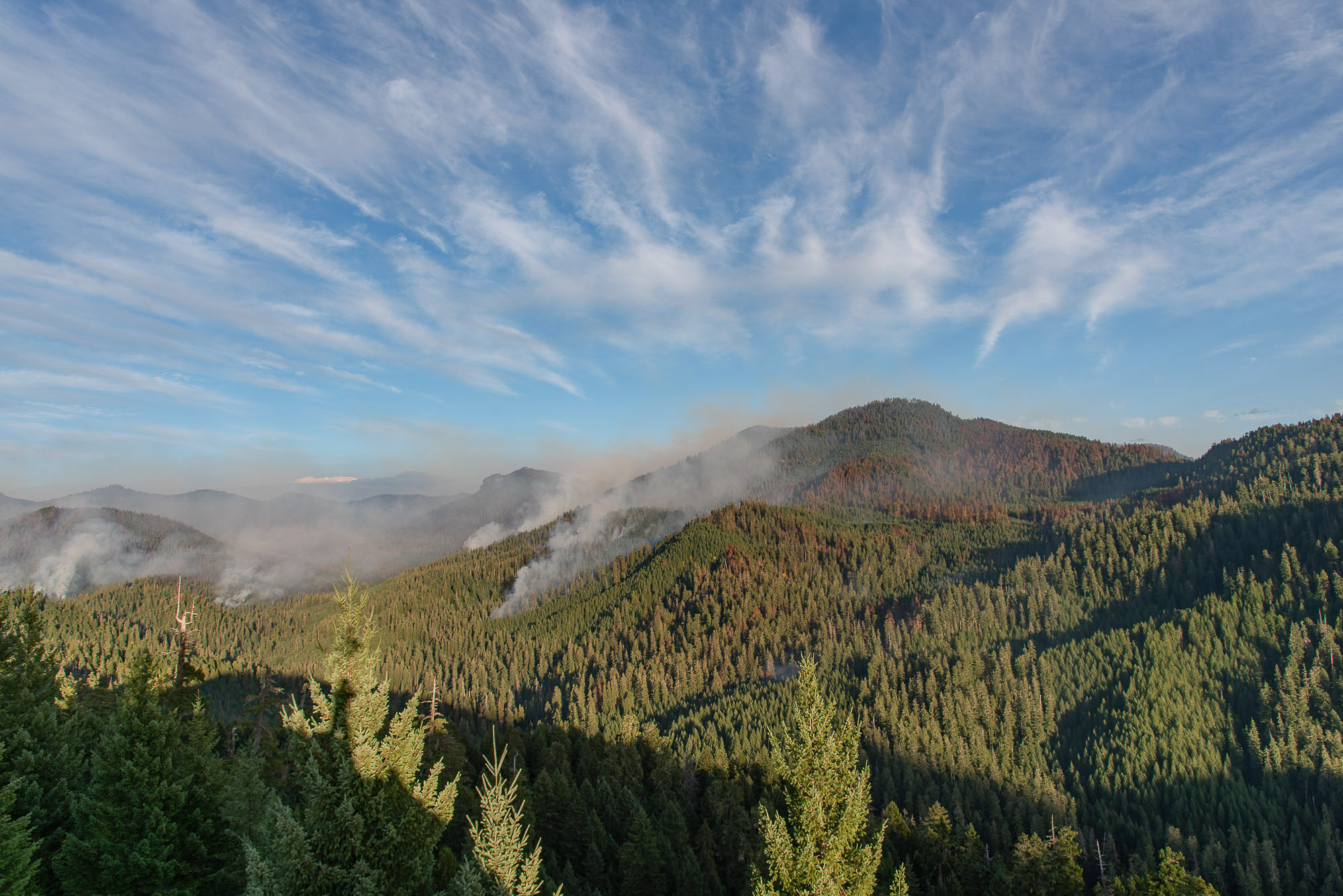In the afternoon of Sunday, Aug. 6, Brooke Penaluna was visiting with colleagues when she received a text about a fire burning in the H.J. Andrews Experimental Forest.
“I was shocked,” Penaluna said, adding that the fire had presumably started the previous night during a lightning storm. As a biologist for the USDA Forest Service Pacific Northwest Research Station and the lead scientist for the H.J. Andrews Experimental Forest, Penaluna immediately began coordinating with other leaders and fire crews.
On a map, the H.J. Andrews Experimental Forest is located on the western slopes of the Cascades, spanning 55 miles east of Eugene. The forest comprises 15,800 acres which encompass the Lookout Creek watershed and is co-managed by Oregon State University, the USDA Forest Service PNW Research Station and the Willamette National Forest, according to the forest’s website.
Penaluna also said the forest has many global and national research designations, including a “long-term ecological research” site, which means that the forest is humming with equipment collecting long-term data.
“A lot of our instruments were still cranking away and delivering information on soil and air temperature and streamflow, even as the fire burned over them,” said Fred Swanson, a retired research geologist for the USDA Forest Service PNW Research Station and affiliate professor in OSU’s College of Forestry.
Swanson likened the situation to an emergency room, the forest as the patient. Similar to losing a loved one, Swanson said, the initial emotions of researchers surrounding the fire were mixed: running the gambit from anger to acceptance, and often all at once.
Both Swanson and Penaluna said it was particularly hard on the graduate students whose already compressed timelines were interrupted.
Nina Ferrarri, one of Betts’ Ph.D. students in the department of forest ecosystems and society, studies the vertical distribution of birds in old growth forests. Ferrari said that she was fortunate to have completed her field season by the time the fire started.
“So as a researcher I was…like, okay, I don’t have to scramble right now and ultimately this can lead to interesting research questions down the line,” Ferrari said. “But, as a human, and a lover of that forest…I was very sad.”
Matt Betts is a professor in OSU’s College of Forestry and the lead principal investigator for the LTER grant funded by the National Science Foundation. He spoke to the challenges of returning research to the forest and said work is under way to find funding for graduate students who were forced to stall their projects and to reinstall instruments that were damaged in the fire.
Betts also said that, despite the obvious losses to the H.J. Andrews research community, the extensive pre-fire data collected by the instruments in the forest before and during the fire also make it a unique opportunity to study the effect of fire on a landscape.
“One of the most rigorous ways you can do science is to have data before an experiment and afterwards,” Betts said. “Of course it would be even better if it was a random design. But fire doesn’t burn randomly, so this gives us probably one of the more rigorous opportunities.”
Currently, the burned forest remains closed to researchers, said Penaluna, and although it has slowed down, the fire continues to smolder.
While scientists are starting to ask new questions, the artists involved in the H.J. Andrews forest are also beginning to adapt their projects in the wake of the fire.
David Paul Bayles, a photographer whose work focuses on the interactions between people and forests, brings an artistic perspective to post-fire recovery.
For the past several years he has worked with Swanson on two projects: one focused on old growth and more recently, one that uses photography to document the regrowth of the forest burned in the Holiday Farm Fire.
Bayles is hopeful that he may be able to set up photo points in the Andrews, that would similarly document post-fire recovery in an unmanaged forest ecosystem.
For artist and OSU instructor Leah Wilson, the H.J. Andrews Experimental Forest holds a family connection: her husband is the great grandson of Horace Justin Andrews, whom the forest is named after.
Wilson completed an artist residency with the Spring Creek Project in the research forest in October of 2012.
“After I did that,I realized how much depth that place has, specifically with time,” Wilson said. “I decided that in order to be able to really respond to the place in any meaningful way, I would also have to work with that place for my entire lifetime.”
Since then, Wilson has produced many artistic interpretations of the forest including a piece titled “Listening to the Forest,” installed in the main stairwell of Peavey Forest Science Center.
Wilson said that she is already changing course to include the fire in her work. She noted that as an artist, the changes the fire will bring to the landscape are intriguing and her medium may allow her to incorporate them into her art more freely than many researchers.
“So, as an artist, I am fascinated and just excited to get in there,” Wilson said. “I personally, am devastated.”
As someone who spent his career studying physical disturbances, from volcanic eruptions to clearcuts and fires, Fred Swanson offered some hope for the future of the forest.
“Invariably, over all my years of wandering into these hammered places, I’ve been stunned by the resilience of the ecosystem and (how) it responds quickly and in surprising ways,” Swanson said. “In all of this, we’re trying to work our personal feelings between despair and grief on one hand, and hope on the other.”

